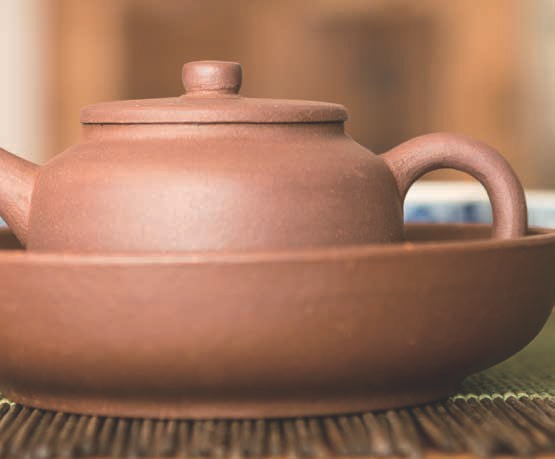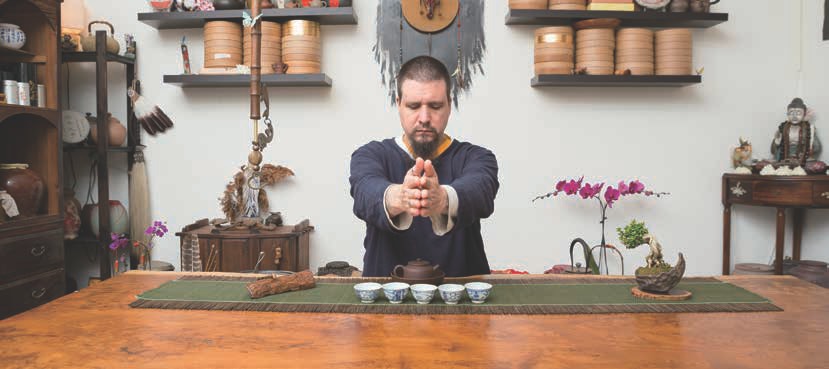
 |
|

We've received some requests to return to the basics, exploring the foundations of all tea brewing from a practical level. Returning to the practical foundation of tea brewing is important for us all. Every now and again we have to renew our contract with the most essential principles in order to make sure that the ground on which we build our mastery is strong. Though these principles apply to bowl tea as well, they are primary in gongfu brewing. Over the next five issues, we plan to explore the Five Basics of Tea Brewing one by one, adding depth for the more experienced brewers and covering the foundations for those of you who are new to Tea.
At the center, we often teach that "repeat" is a dirty word. It is much better to say, "renew". The Sanskrit word for wisdom is "prajna". "Pra" means "before" and "jna" is "knowledge", so prajna is that which is before knowledge - the "beginner's mind" as it is often translated. When we think we know something, we shoot ourselves in the feet, crippling our ability to learn from the lessons all around us. The enlightened mind is humble, open and receptive. There is an old Chinese saying that "everything which is not me is my master". When we dismiss things as "basic" we interrupt our learning, our humility and heart growth. We get in our own way. Our heads prevent our hearts from being fully present, from realizing that this lesson that is returning in our lives is a chance to renew our understanding. We miss the chance to deepen and refine our relationship to the foundation of our art and practice. This applies to Tea as much as to life.
We also often have the bad habit of assuming that mastery is an extravagant, difficult skill. Real mastery is in the simple. Advanced techniques are basic techniques mastered. In life, it matters little that we achieve exalted spiritual states if we cannot be happy in the simplest ways; if we cannot connect to this moment fully, it doesn't matter what satori we had in the past. And if we cannot connect heart-to-heart with the people, places and things around us, all the wisdom cultivated in meditation or at seminars is lost on us. We must brew tea with heart to master this art!
There is a great Tea story that expresses this: A man once walked across Japan because he heard that the great Zen master Rikyu was accepting students. After some time, he was allowed to study Tea with the old master. He worked hard and progressed. After about a year of study, he asked Rikyu: "Master, now that I have been here a year, would you initiate me into the essence of Cha Dao?" The master smiled, "Of course, I would have done that on the day you arrived... The essence of Cha Dao is this: draw the water, lay the coals, boil the water and steep the tea!" The man scoffed, "That's it?! I could have realized that at home!" Rikyu looked at him in askance, shaking his finger. "The day you can do that, I will walk across Japan and lay my head at your feet and call you master!"
With the right spirit of heart - knowing that the path from the mind to the hand travels through the heart - and a beginners mind, let us then return to the Five Basics of Tea Brewing, starting with the first: Separate the tea space in half and do everything on the left side with the left hand, and everything on the right with that handi.
A lot of the basics of tea brewing arise out of the need for fluency and remaining centered while brewing tea. Lefties are usually more centered, having grown up in a righthanded world. The rest of us, however, are often off balance in our daily lives. Our right hand is usually much stronger than the left, and we go about our day as though the left hand is some kind of evolutionary vestige, like the tailbone. Through Tea, we return to balance. We should be able to do every movement proficiently with both hands. This brings our whole body to the center, and the movements will then flow from our heart. We will be more present, more engaged and brew from the core of our being - the "dan tian", as it is called in Chinese. This is the navel-point we breathe from when we are relaxed and focused. Using both hands will bring tea brewing to that space.
Being energetically and physically front and center to your tea and your guests promotes mindfulness. This simple aspect of tea brewing cannot be overestimated. There is a profound change in brewing with both hands, without swiveling from the center of your space. It changes the way you handle each implement, promotes dexterity and an availability to your guests.
In Asia, it is rude to turn your back on your guests when brewing tea. When you reach over the center with either hand, you will invariably lose your center to your tea implements and turn your back on some of your guests. This is a minor reason for this principle, but it is important. By staying upright and facing the center, you will find concentration easier. You will also find it easier to connect to your guests, whether energetically if it is a silent tea session or in heartfelt conversation if you choose to have a discourse over your tea. Staying oriented towards the center honors your guests, showing that you are fully present to the moment.
The simple, most practical and maybe most important reason for dividing the table and doing all movements with the corresponding hand relates to protecting your teaware. In decades of tea brewing, the number one reason I have seen teapots, cups or other implements knocked over or broken (by beginners and advanced brewers alike) is reaching across the table with the opposite hand. If you reach over your pot and cups with the left hand to get something from the right side of the table, as you return to a centered position, the pot and all your teaware are now in a blind spot. Tea brewers are encouraged to wear loose-fitting and comfortable clothes, and if your sleeves are long, it will be easy for you to catch them on your tea cloth, tea tray or even the pot and knock something over. It happens a lot! If you try reaching across in this manner, you will see just how blind you are to the placement of things on your tea table.
You will have to practice using both hands in tea brewing if you are to achieve gongfu, which you know by now means "mastery". This will require that you pass things from one hand to the other. Make a habit of this. It is always amazing to see this unfold in Japanese or Chinese tea ceremonies, as it inspires clarity, purity of movement and mindfulness/presence in host and guest alike. In Japanese tea rooms, for example, there is often a sliding door that the host goes in and out of to bring supplies from the back room. If you have the chance to attend a ceremony, or watch a video of one, you will notice that the host opens the door halfway with the left hand and then finishes opening it with the right. She then goes out and closes the door in the same way.
This month, try putting your hands together in a good Namaste over your heart. Then extend your hands together to the center of the table and commit to doing everything left of that line with the left hand and everything on the right with the right hand. There are, of course, many deeper levels to this practice that we haven't covered here (like the movement of Qi in the body). We encourage you to renew this practice even if you are a seasoned brewer! As always, we are excited to hear your insights. Contact us with any ideas, comments, wisdom our questions:
globalteahut@gmail.com
